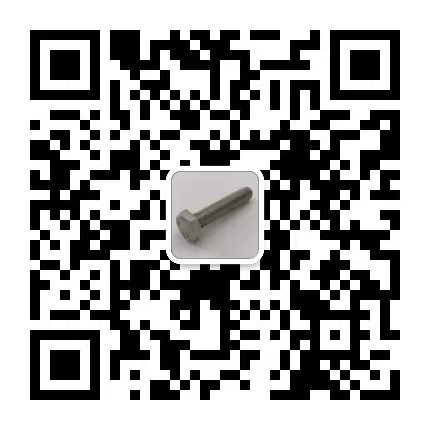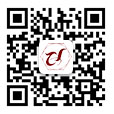VIDEO & CENTER

Bolt connection can be seen everywhere in industrial production and life. It is widely used because of its simple assembly, convenient disassembly, high efficiency and low cost. Through bolt tightening, parts can be combined to achieve the desired function of design. It is also an important factor to ensure that the function of the parts does not fail within the design life.

At present, the causes of bolt tightening failure and control methods are mostly based on theoretical analysis, some focus on the difference between torque method and Angle method, and some focus on tightening control technology. But the actual problem is more complicated, how to choose effective control method for bolt tightening failure mode is very important.
01
Overview of bolt tightening principle
According to the process of bolt tightening and the mechanical principle, the mechanical formula of bolt tightening is as follows:
T = F *L
Where: T is the moment; F is the clamping force; L is the length of the lever.
In addition, the bolt tightening rule follows the 50-40-10 rule.
Tightening rules of bolts
As can be seen from Figure 1, 90% of the torque is used to overcome friction, and the often said bolt tightening is firm, which is an important parameter we want to obtain, that is, the clamping force F. Therefore, in actual production, how to choose the tightening tool, reduce the coefficient of friction and how much torque to design to tighten the bolt is very important.
02
Bolt tightening tool selection
The selection of bolt tightening tools follows the following points:
(1) The process requires precision. At present, there are two categories of tightening tools: one is pneumatic tightening; The other is electric tightening, the former accuracy is lower than the latter, and the engine bolt tightening is multi-purpose electric tightening.
(2) Safety level of connected parts. Bolt connection, to ensure that the clamping force is higher than the external load, must have a certain safety margin, the impact of bolt safety margin is affected by the vibration conditions of the connection, friction changes, tightening accuracy, the size of the connector changes, the general optional safety margin and tightening accuracy and the grade of the material.
(3) Product material characteristics. Depending on the connection and the material to be connected, it is generally related to the ductility of the material. According to the measurement principle of the clamping force, the better the ductility of the material, the greater the clamping force.
(4) Space requirements. For example, there are two kinds of electric tightening tools for engine bolt tightening: handheld and automatic tightening. Handheld is cheaper than automatic tightening tools. In the engine assembly process, according to the installation method of different stations and ergonomics, handheld is generally used for stations with small space and fewer bolts, and automatic tightening generally requires stations with large space and more bolts.
(5) Connection characteristics. There are two categories: one is a soft connection, after tightening to reach the fitting point, it needs to continue to rotate more than 2 laps to reach the target torque value. The other is hard connection, after tightening to reach the fitting point, rotate within 30 degrees to reach the target torque value, note: the fitting point is generally 10% of the target torque.
(6) Production efficiency, etc. The embodiment of efficiency is the performance of the tool failure rate and pass rate, the failure rate of the tightening tool is low, the pass rate is high, the production efficiency is high, generally need to be selected according to the product design value and the method to be monitored, and do the corresponding MSA (measurement system analysis) analysis after selection, and finally determine whether the tightening tool meets the requirements of production efficiency.
03
Failure mode and cause analysis of bolt tightening
In actual production, the bolt tightening failure modes often encountered can be summarized as follows:
(1) Screw the bolt -- the common screw bolt is manifested as the bolt slip and twist. The main cause of bolt slip is that the tightening torque fails to meet the requirements of programmed torque, resulting in excessive tightening; The main reason for bolt breakage is that the bolt installation is not normal, or the strength of the bolt itself is not up to the standard, and the torque requirements set by the program are broken off. In actual production, the failure risk is not high, and occasionally individual bolts are caused by mixing unqualified materials.
(2) wrong tightening torque -- the common performance is too low or too high torque, too low usually occurs in the tightening process, the main reasons are not enough tightening time, or the tightening gun (shaft) and the relative position of the bolt is wrong, or the tightening gun (shaft) wear, or the bolt and the bolt hole is not good; Excessive usually occurs at the end of the tightening program, that is, after the tightening is completed, when the final torque set by the program is judged, it is manifested as torque overload, mostly caused by the unreasonable setting of the tightening torque judgment conditions.
(3) wrong tightening Angle -- It is used to monitor the tightening torque when the abnormal setting Angle monitoring, generally placed in the middle step of the program and the final torque step, to control the bolt is not screwed. Generally set based on production data, therefore, in order to ensure the rationality of Angle monitoring, it is necessary to regularly perform 6 sigma analysis based on production data to optimize the Angle monitoring range.
04
Bolt tightening control method
Common bolt tightening control methods are as follows: torque control method, torque control Angle monitoring method, torque in the elastic region -- Angle control method, torque in the plastic region -- Angle control method, yield limit control method.
The torque control method is suitable for relatively simple tightening control, commonly used manual fixed torque tightening, more used in repair, the tightening principle is that there is a certain relationship between the tightening torque and the axial preload force, by setting the tightening tool as a specific tightening value to control the clamping force of the connector. In the above-mentioned tightening principle, 90% of the torque to overcome friction, only 10% to produce pre-tightening force, coupled with the instability of external factors, therefore, the method, low accuracy, easy to appear the bolt is not tightened in place to achieve the target torque problem, must do a good static torque spot check when using.
Torque Angle control method is to increase the control conditions on the torque control method, generally starting from 50% of the target torque monitoring, only until the tightening is completed, so it is widely used in production, and the precision is also high. Torque in the elastic region -- Angle control method is to tighten the bolt to the elastic deformation region, and obtain the desired tightening torque by controlling the bolt elongation at a certain Angle. Therefore, the torque control method, the torque control Angle monitoring method and the torque -- Angle control method in the elastic region belong to elastic tightening, while the torque -- Angle control method in the plastic region and the yield limit control method belong to plastic tightening. These two methods are based on the fact that the rotation Angle of bolt tightening is roughly proportional to the sum of the elongation of the bolt and the loosening amount of the tightened part. That is, the bolt is tightened and stretched close to the yield point of the bolt, and then rotated at a certain Angle to stretch the bolt to the plastic area. In this way, although the same friction is overcome, the utilization rate of the material is maximized and the desired clamping force is obtained. The following three methods have higher requirements for bolt performance and structural design, more difficult to control, and more expensive tightening tools.














